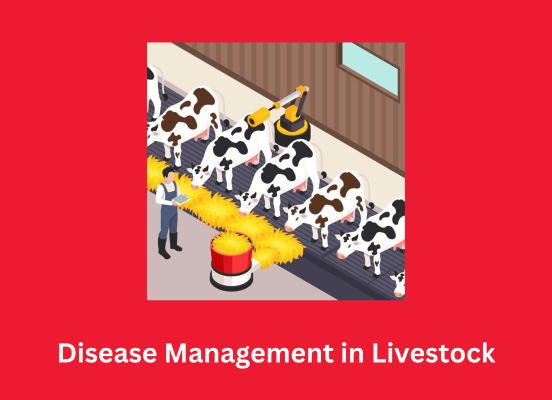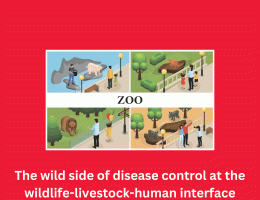
Optimizing Livestock Nutrition: Importance of Balanced Diets and Formulation of Feed Rations
- By admin --
- Tuesday, 12 Mar, 2024
Introduction:
Livestock nutrition is a cornerstone of animal husbandry, vital for maximizing productivity, making sure animal fitness, and promoting average welfare. A balanced eating regimen, tailored to the specific dietary necessities of each species and manufacturing stage, is essential for achieving ideal performance. This essay explores the importance of balanced diets for distinct varieties of farm animals and delves into the principles of formulating nutritionally good enough feed rations.
Importance of Balanced Diets:
Balanced diets provide farm animals with the vital nutrients important for boom, replica, and maintenance of physiological features. These vitamins include carbohydrates, proteins, fat, nutrients, minerals, and water. Each nutrient plays a unique role in helping various metabolic methods and bodily functions. For instance, proteins are essential for muscle development and tissue repair, while carbohydrates serve as a primary strength source for metabolic sports.
Inadequate nutrition can lead to quite a number health issues and reduced productivity in farm animals. Nutrient deficiencies or imbalances may also bring about stunted growth, reduced reproductive overall performance, susceptibility to diseases, and impaired immune characteristic. Conversely, overfeeding or immoderate intake of sure vitamins can lead to obesity, metabolic disorders, and digestive disturbances. Therefore, attaining a balance in nutrient consumption is essential for optimizing cattle fitness and overall performance.
Different Types of Livestock:
The nutritional requirements of farm animals vary depending on species, breed, age, physiological fame, and manufacturing dreams. For instance, ruminant species consisting of livestock, sheep, and goats have specific digestive structures able to fermenting fibrous plant materials inside the rumen. These animals require diets wealthy in roughage, inclusive of grasses, hay, and silage, to support microbial fermentation and maintain rumen health.
In assessment, monogastric species like pigs and chicken have simple stomachs and require diets which might be extra concentrated in electricity and without difficulty digestible protein resources. Poultry, particularly, have high requirements for crucial amino acids, nutrients, and minerals to aid speedy increase and egg manufacturing. Additionally, lactating and gestating animals have elevated nutrient needs to support fetal improvement, milk production, and lactation.
Formulation of Feed Rations:
Formulating nutritionally good enough feed rations entails balancing the nutrient content material of feed ingredients to fulfill the precise necessities of livestock. This method requires a thorough know-how of nutrient composition, digestibility, and bioavailability of feedstuffs, in addition to know-how of the goal animal's nutritional wishes.
Feed substances are decided on based totally on their nutrient content material, cost-effectiveness, and availability. Common substances consist of grains (e.G., corn, wheat, barley), protein sources (e.G., soybean meal, fish meal, meat and bone meal), forages (e.G., alfalfa, clover, grasses), and mineral dietary supplements. By combining extraordinary elements in appropriate proportions, nutritionists can formulate feed rations that offer the necessary vitamins within the right quantities.
Nutrient requirements for livestock are typically expressed as advocated allowances or dietary concentrations based totally on elements inclusive of body weight, boom rate, milk manufacturing, and environmental conditions. These tips are hooked up via medical studies and empirical data and might range depending on local differences, genetic factors, and management practices.
Formulated diets have to be frequently evaluated and adjusted to account for modifications in animal overall performance, feed exceptional, and environmental conditions. Feed performance, feed conversion ratios, and value-effectiveness are essential issues in feed method, as they directly impact profitability and sustainability of livestock operations.
Conclusion:
In conclusion, balanced nutrition is vital for maintaining the health, productivity, and welfare of cattle. By imparting diets that meet the specific nutrient requirements of every species and manufacturing stage, farmers can optimize animal performance and achieve sustainable production dreams. Understanding the concepts of feed system and regularly assessing dietary adequacy are vital steps in ensuring most reliable nutrition for cattle. Through proper nutrients management, farmers can enhance efficiency, profitability, and basic sustainability of their operations.





